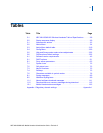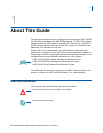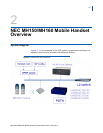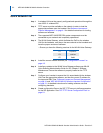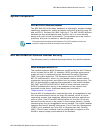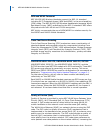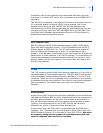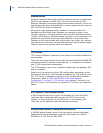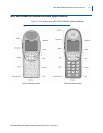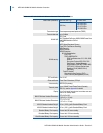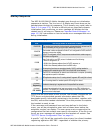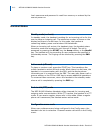
2-4 NEC MH150/MH160 Mobile Handset Overview
NEC MH150/MH160 Mobile Handset Administration Guide - Revision 2
WPA and WPA2 Personnel
NEC MH150/160 Wireless Handsets support the 802.11i standard
including Wi-Fi Protected Access (WPA and WPA2) in the pre-shared key
(PSK) mode. The NEC MH150/160 Wireless Handset also supports Wired
Equivalent Privacy (WEP) as defined by the 802.11 standard. NEC offers
the product with both 40-bit and 128-bit encryption.
NEC highly recommends the use of WPA/WPAII for wireless security for
the MH160 and MH160 Mobile Handsets.
Cisco Fast Secure Roaming
Cisco’s Fast Secure Roaming (FSR) mechanism uses a combination of
standards-based and proprietary security components including Cisco
Client Key Management (CCKM), LEAP authentication, Michael message
integrity check (MIC) and Temporal Key Integrity Protocol (TKIP). FSR
provides strong security measures for authentication, privacy and data
integrity on Cisco APs.
UNIVERGE NEAX 2000 IPS, UNIVERGE NEAX 2400 IPX, SV7000
UNIVERGE NEAX 2000 IPS, the UNIVERGE NEAX 2400 IPX, and the
SV7000 are the three NEC PBX models with SIP functionality. These NEC
SIP servers are referred to generically as proxy servers. The terms
PROXY and PROXY SERVER are used for configuration file commands as
detailed in
“Programming the Mobile Handset Features” on page 6-1.
For the sake of clarity, we will refer to these models individually and
collectively as “the NEC PBX”.
Each MH150 or MH160 Mobile Handset requires one SIP license per line.
If multiple lines are required on a MH150 or MH160, then additional SIP
licenses are required. When the MH150/MH160 registers with the PBX, it
uses a license. When the MH150/MH160 is powered off, the license is
not released. It has been determined that this is normal operation.
Quality of Service (QoS)
Quality of Service is provided by using NEC WLAN Voice Gateway Voice
Priority (WVG), Wi-Fi Standard QoS, or Cisco Client Extensions (CCX)
version 4. QoS modes cannot be mixed within the same WLAN; all
mobile handsets on the network must have the same QoS setting.
The WLAN Voice Gateway (WVG) is a network device running the SVP
code. The SVP code is a quality of service (QoS) mechanism that is
implemented in the handset and an access point (AP) to enhance voice
quality over the wireless networks. The SVP code provides a quality of
service (QoS) mechanism that is implemented in the AP to enhance
voice quality over the wireless network. SVP code gives preference to
voice packets over data packets on the wireless medium, increasing the




